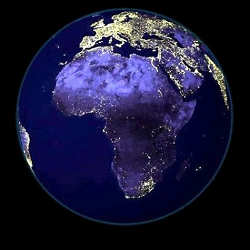
Poverty, hunger and other social problems are as old as humankind, yet battling these issues and affecting change is a daunting proposition. "In order to address poverty and other social problems, you have to understand how and where a problem exists, how to direct resources to it, and what impact any anti-poverty program is having," states Marshall Burke, assistant professor of Earth System Science at Stanford University.
In the past, such supporting data has largely been absent. As a result, government entities and others have had to make educated guesses and work on assumptions. Now, however, with advances in artificial intelligence (AI) and big data analytics, researchers are assembling information to aid the poor. They are tapping AI to better understand where pockets of poverty exist, how to grow crops more effectively, and how to address issues as wide-ranging as illiteracy and social entrepreneurship.
Deep Insights
Although governments and non-governmental organizations (NGOs) have long based their decisions—and spending—on whatever data and statistics they could amass, delving beyond such aggregated numbers has been next to impossible. Making matters worse, discussions about poverty and other social problems often become politicized.
"These are very difficult issues to crack," says Kush R. Varshney, co-director of the IBM Science for Social Good initiative, which focuses AI on poverty, hunger, disease, illiteracy, and more. "They involve a mix of very deep social issues and technical challenges."
Elisabeth Mason, founding director of the newly created Stanford University Poverty & Technology Lab, says AI may prove revolutionary in the battle against poverty. "With the influx of big data and the AI software to sift through it, we can find out which programs, in which combination, work best to fight poverty. And we can imagine whole new ways of supporting low-income people." She and others are exploring various AI methods to better understand causation, interventions, and outcomes.
Consider Burke's research. A problem in many parts of the world is distinguishing near-poverty and marginal poverty from abject poverty, he notes. Last year, he and a team of multidisciplinary researchers at Stanford began feeding hundreds of thousands of daytime satellite photos of Africa into a convolutional neural net (CNN), using a separate set of images of the Earth at night as labels. "The poorer the area, the fewer and dimmer the lights," he explains. The result? "Nighttime lights help us identify features in the daytime imagery that could be useful for predicting poverty."
The neural net found that agricultural regions, bodies of water, and urban extent were all features in the daytime imagery that were predictive of economic well-being. Ultimately, Burke discovered the neural net could explain up to 75% of the variation in poverty and wealth across five African countries. The team is continuing to train and refine the CNN, but it also is exploring the use of a generative adversarial net (GAN), which learns by comparing results across two connected neural nets.
By the Numbers
Others are also exploring AI to address other social ills. George Kantor, a senior systems scientist at Carnegie Mellon University, has created FarmView, an umbrella project that studies food and hunger. A group of researchers at CMU are using AI to better understand how to optimize water use, reduce plant disease, and improve crop yields. He is also using a GAN to better understand genetic markers that predict high average yield for sorghum crops. The goal, he says, is to "breed new varieties of staple crops adapted to the special challenges of the developing world."
Meanwhile, IBM researchers are using a variety of AI methods to examine disease, hunger, food handling, resource allocation, literacy, and more, Varshney says, as part of the umbrella Science for Social Good initiative. A literacy project in central Texas, called Simpler Voice, taps semantic analysis and deep learning to convert raw text and other data into images and simple descriptions when low-literacy individuals encounter unknown situations. "The interplay of societal problems with AI represents fertile ground for addressing complex challenges," he notes.
Of course, AI will never cure all social problems—and it may introduce new challenges. Mason says many in the anti-poverty community are ambivalent about AI and the automation it delivers. "There's a fear that it could result in significantly higher levels of unemployment," she adds. What is more, there are concerns that AI could be abused to exploit the poor. "AI is vulnerable to myriad misuses. It could be turned against low-income communities. For example, they could be micro-targeted for spurious purchases or rejected for commercial, business, and employment opportunities," she explains.
Nevertheless, reliance on AI to address poverty, hunger and other social problems continues to march forward. Says Kantor, "We are just beginning to scratch the surface of what AI and neural nets can be trained to do. As high-end GPUs become cheaper and more available, deep nets will have an even bigger impact."
Samuel Greengard is an author and journalist based in West Linn, OR.



Join the Discussion (0)
Become a Member or Sign In to Post a Comment